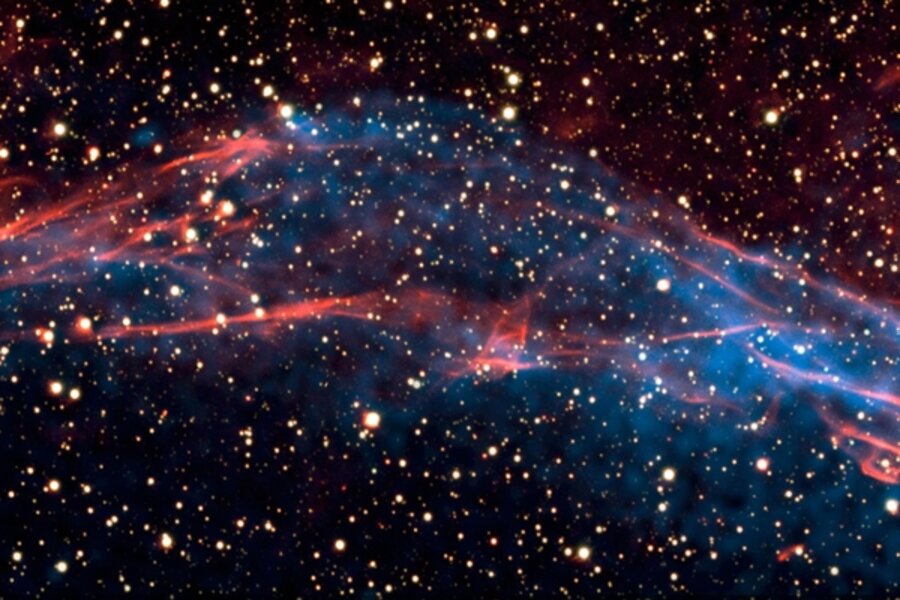How astronomers fill in uncharted areas of the universe
Astronomers are filling in the blank spaces on their 3-D map of our universe thanks to their ability to sense almost every conceivable form of electromagnetic radiation. Those blanks include remote regions of space and time when the first stars formed and when young galaxies began to group themselves into gravitationally bound clusters.
Last April, NASA's Swift gamma ray space telescope detected what astronomers called a gigantic "blast from the past." Gamma rays are the most energetic form of electromagnetic radiation. Astronomers would still be scratching their heads over what exactly they had found if those gammas were their only data. So observatories around the world immediately began studying the event through radio waves, infrared radiation, and X-rays. Now two international research teams report that those data give direct insight into the unexplored era when the first stars switched on.
In an announcement from Britain's University of Leicester, Nial Tanvir, who led one team, said, "This observation allows us to begin exploring the last blank space on our map of the universe." See the journal Nature for technical details. In an announcement from the National Radio Astronomy Observatory in Socorro, New Mexico one of the other team's researchers, Derek Fox at Pennsylvania State University explained: "It's important to study these explosions with many kinds of telescopes.... The result is a unique look into the very early universe that we couldn't have gotten any other way." That result will appear in Astrophysical Journal Letters.
The teams are studying the death explosion of one of the first stars. It's the most distant astronomical object yet discovered. It happened some 13 billion light years away at a time when the universe was only about 630 million years old. That's a mere 4 percent of it's current 13.7 billion-year age. At that time those very early stars were generally brighter, hotter, and more massive than their later successors. The gamma ray explosion (labeled GRB 090423) produced an expanding nearly-spherical gaseous halo whose characteristics reflect the nature of the expired star.
Multidata astronomy – infrared, radio, optical, and X-ray – is helping astronomers explore another little know era – the time when galaxy clusters first formed. NASA's Chandra X-ray Center reports that such combined data has discovered the most distant – and oldest – cluster yet known. Labeled JKCS041, it formed when the universe was about a quarter of it's present age. It now is located 10.2 light years away.
Research team member Stefano Andreon at Italy's National Institute for Astrophysics explained, "We don't think gravity can work fast enough to make galaxy clusters much earlier," Ben Maughan at Britain's University of Bristol, likened the discovery to "finding a Tyrannosaurus Rex fossil that is much older than any other known." That could give a new perspective on dinosaur evolution. Likewise, finding very old galaxy clusters could change ideas about cosmological evolution. Details coming in Astronomy & Astrophysics.
NASA's announcement explained it took all the different kinds of data to pin down the nature of this galaxy grouping. The X-ray data in particular were crucial in proving it is a genuine cluster of galaxies bound together by their mutual gravity. In the 21st century, astronomers pouring over data from only one type of telescope could be considered quaint.





